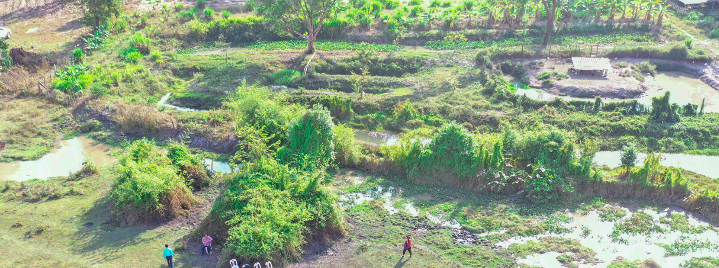
Author: EU in ASEAN | April 1, 2022 | Initiatives
The ASEAN region is home to over half of the world’s peatlands. Yet not all ASEAN Member States (AMS) are familiar with these native ecosystems and the challenges presented by peatland management and conservation. Through Component 1 of the Sustainable Use of Peatland and Haze Mitigation in ASEAN (SUPA) programme, the European Union (EU) and ASEAN are committed to tackling the root causes of peatland fires and mitigating the adverse impacts of climate change.
Phingsaliao Sithiengtham has worked at the Department of Water Resources at the Ministry of Natural Resources and Environment, Lao PDR, since 2012 but it is not until 2018 that peatland management came under his purview.
‘Peatland management is a new mandate for all of us in Lao PDR’, Phing said. ‘Since its adoption, the mandate had been transferred from one department to the next, until it finally came under my scope of work in 2018.’
In September 2020, Phing participated in three half-day sessions of virtual training organised by SUPA and the Measurable Action for Haze-Free Sustainable Land Management in Southeast Asia (MAHFSA) for ASEAN Member States including Cambodia, Lao PDR, Myanmar, Philippines, Thailand and Viet Nam.
One of the main objectives of the training was to strengthen the capabilities of AMS in peatland assessment and mapping. ‘Learning about the different characteristics of peatlands will help me identify and map peatlands in my country’, Phing said.
In Lao PDR, a peatland survey was conducted in 2015 in two provinces: Vientiane and Champasak. The survey identified two peatland sites in Vientiane province and five in Champasack. ‘It’s not easy to confirm the exact area covered by peatlands in our country without a national definition of what constitutes a peatland, or any national guidelines for mapping peatlands’, Phing said.
Peatland identification is the first step in peatland management and conservation but as Phing experienced, it remains a challenge for Lao PDR.
In another area, Zoisane Geam Gabinete Lumbres is an Ecosystems Management Specialist in the Department of Environment and Natural Resources of the Philippines. Even as a forestry major, Lumbres was not familiar with peatlands until she started working in a peatland conservation project in 2011. ‘Peatlands were not included in the forestry curriculum before in the Philippines’, she said.
Two of the main peatlands in the Philippines include the Agusan Marsh in Mindanao and the Leyte Sab-a Basin in the north-eastern part of Leyte Island. The Caimpugan peatland in Agusan Marsh has remained relatively intact due to the natural protected area status it received in 1996.
The Leyte Sab-a Basin, however, is severely degraded. In the 1970s, the National Food Authority and the Philippine Coconut Authority funded an initiative to, amongst others, convert swamps and marshlands into agricultural lands.
This included the clearing of the Leyte Sab-a peatland forest. Over 3 000 hectares of the basin were drained over the years and portions of it were converted into agricultural land.
‘It was not until 2008 that the government recognised the importance of peatland conservation and initiated a rehabilitation project’, Lumbres said.
In 2019, a major peatland fire that lasted for weeks occurred in the dry portions of the Leyte Sab-a Basin and in some peatland areas in Agusan Marsh. ‘We didn’t have an early warning system nor the capacity to fight the fires.’
Dry peatlands are major fire hazards in the region and the Philippines is not the only country facing the risks of peatland fires nor is it the only one in need early warning system.
Between 1997 and 1998, severe land and forest fires in the region led ASEAN Member States to draft an ASEAN Agreement on Transboundary Haze Pollution (AATHP). The agreement was signed on 10 June 2002 in Kuala Lumpur, Malaysia.
‘Not only did the training provide me with a better understanding of the risks presented by peat fires and the importance of establishing an early warning system, it also made me recognise the urgent need for a national policy on peatlands’, Lumbres said.
Meanwhile in Lao PDR, Phing is also putting his new knowledge into practice. ‘We just started peatland mapping and are preparing a series of peatland surveys’, he said with a smile.
Article link: https://euinasean.eu/bridging-the-gap-in-peatland-management/
